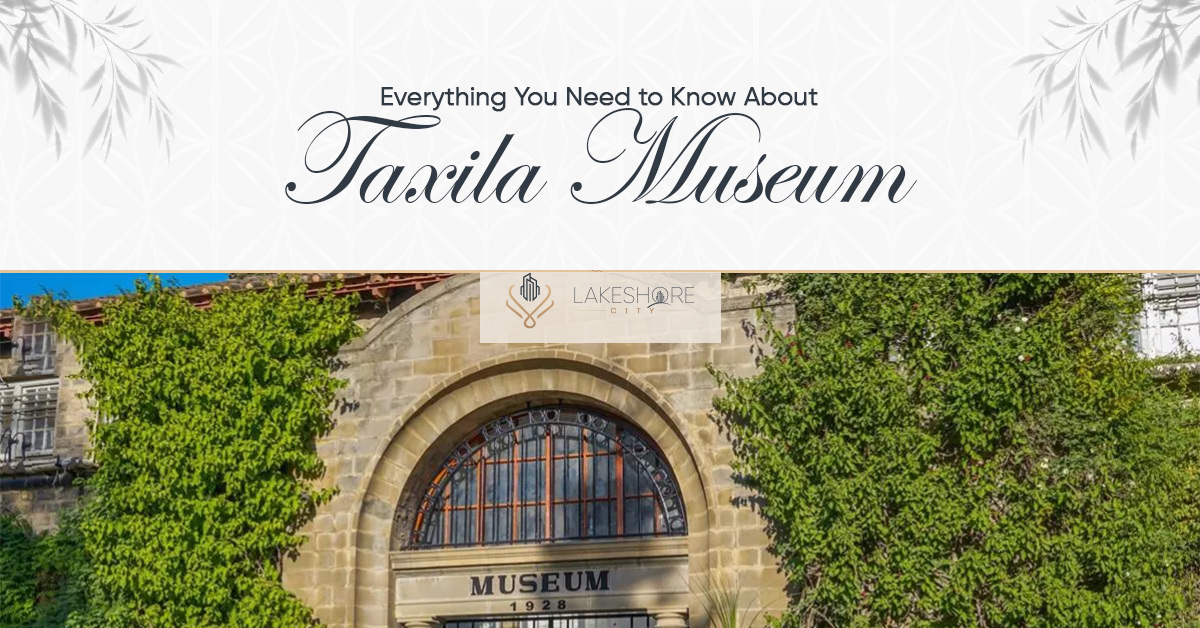Situated on Taxila Khanpur Road, the Taxila Museum is well-known for its priceless ancient artefacts. Make sure to check out this location if you’re in Taxila. It was once a model of excellence on a worldwide scale. The museum’s exhibits transport viewers to the 1960s and provide them with a glimpse into a bygone era. Enthusiasts for historical civilizations frequently return to visit them.
Pakistan’s Taxila Museum has been acknowledged as a UNESCO World Heritage Site. It has a sizable collection of sculptures, stones, and historical artefacts. The art and legacy of the Gandhara culture as well as Buddhism are on display in the museum’s noteworthy collection.
There is nothing more fascinating than visiting the Taxila Museum if you have an interest in history. In 1980, the Taxila Museum was included in the UNESCO World Heritage List as a result of excavations conducted by Sir Alexander Cunningham, which revealed the museum’s historical significance.
Information about the Taxila Museum, such as its hours and location, has been compiled by Graana.com.
History of Taxila Museum
The foundation stone of the Taxila Museum was laid in 1918 by Lord Chelmsford, the Viceroy and Governor-General of British India at the time, following the discovery of the ruins of Taxila in the 1800s. The museum was completed in nearly ten years, and on April 5, 1928, it was opened. The museum has a central hall with galleries showcasing different artefacts on either side.
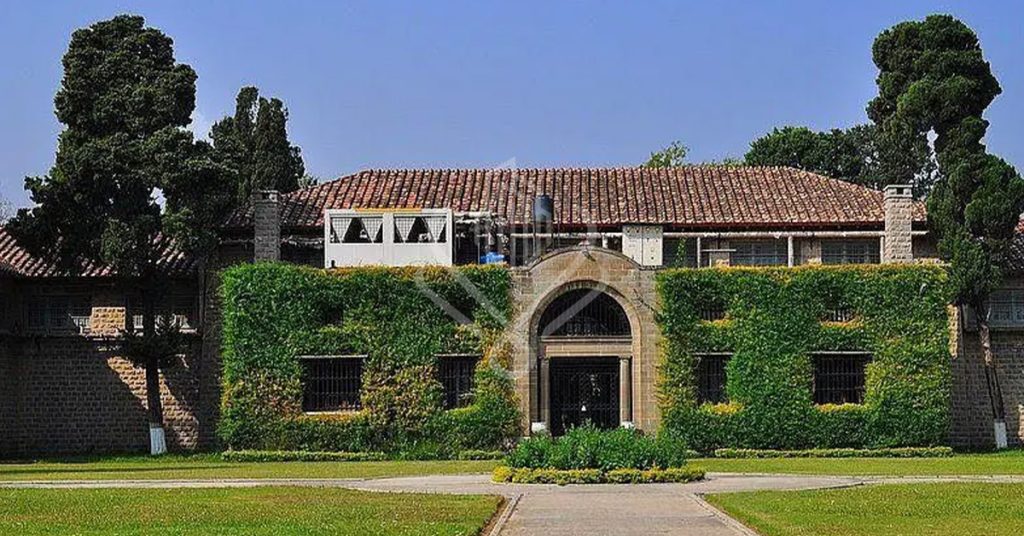
The antique monuments and artefacts from the surrounding area make the Taxila Museum a significant location. The museum offers insightful information about the history, achievements, and culture of ancient civilizations, with almost 7,000 objects on display.
Location
One of the three significant ancient towns in the region, Bhir Mound, is located close to the Taxila Museum. Situated on the opposite side of the ancient city, the Kalabagh-Nathia Gali Road (N-125) is home to numerous stores, hotels, gas stations, and banks.
Travelers from Punjab can easily access Taxila by vehicle thanks to this bustling trade route. In the event that driving is not an option, there is still a train that may take you to the Museum and the Bhir Mound remains. The railway station in Taxila is only a five-minute drive away.
Taxila Museum Timing
The timing of the Taxila Museum is mentioned below:
Season Day Timing
Summers Sunday to Monday 9 am to 4 pm
Winters Sunday to Monday 8:30 am to 5 pm
Artefacts at Taxila Museum
When you visit the Taxila Museum, you will find a variety of artefacts belonging to different areas. Here is the list of artefacts available in the museum now.
- Stone Sculptures
- Stucco and Terracotta Sculptures
- Gold and Silver Jewellery
- Coins
- Crockery
- Inscriptions and Writing Materials
- War Weapons
- Metal Wares and Miscellaneous Items
Stone Sculptures
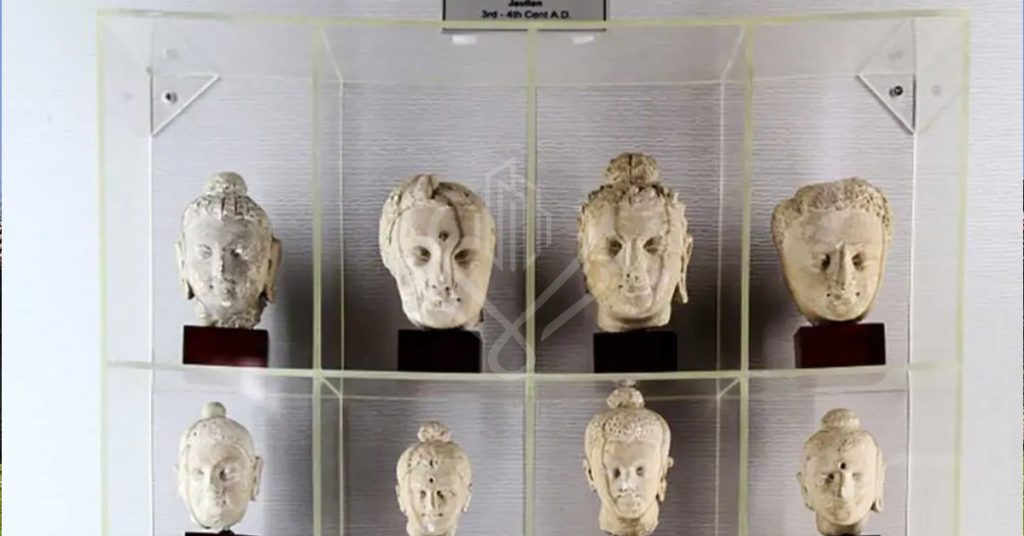
A magnificent collection of tombstone sculptures from the first to the third centuries A.D. can be seen in the Taxila Museum. In addition to the magnificent figure of Gautama Buddha, the founder of Buddhism, these sculptures are on show in the great hall in the centre.
Greek gods, Siddhartha, Maitreya, Padmapani, and other notable figures are depicted in sculptures at the museum. This part also offers visitors the opportunity to examine relic caskets and various architectural features.
Stucco and Terracotta Sculptures
The museum displays terracotta and stucco sculptures that date from the first to the fifth century A.D. These statues of Persians are a testament to the Sakas’ extraordinary creative ability. They primarily used stucco, although they also used gypsum and lime.
A unique scene of the Buddha’s death, Mahaparinirvana, lay worshippers, Buddhists, and Hindu Cyrenaic figures are among the sculptures in the collection. These masterfully grouped statues in the northern gallery offer you a window into the pinnacle of ancient creativity.
Gold and Silver Jewellery
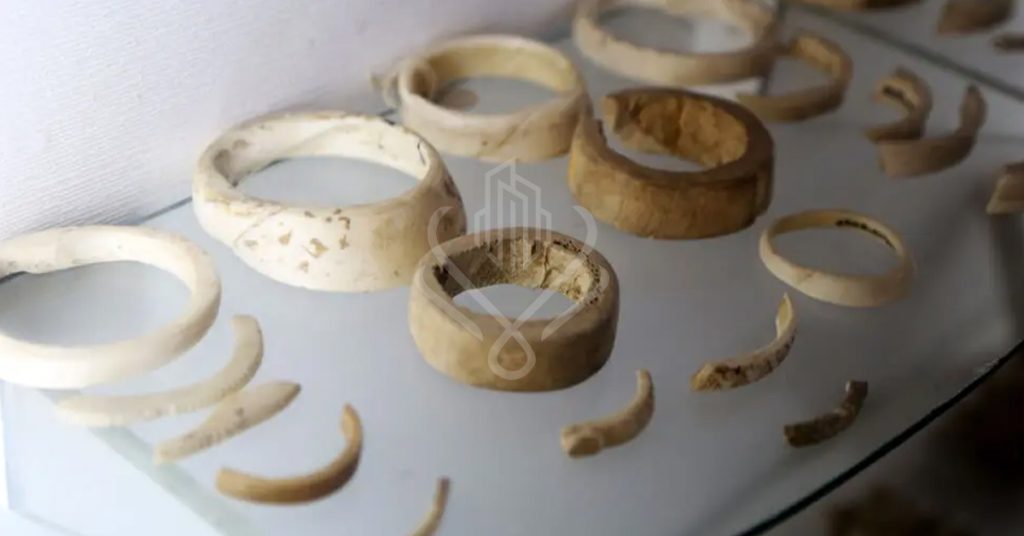
Discover a stunning assortment of jewellery made of gold and silver that dates back to the first and third centuries of the common era at the Taxila Museum. There are many different kinds of jewellery on display, including pendants, rings, and much more. Seeing the expert craftsmanship from those ancient periods in these artefacts is astounding.
Coins
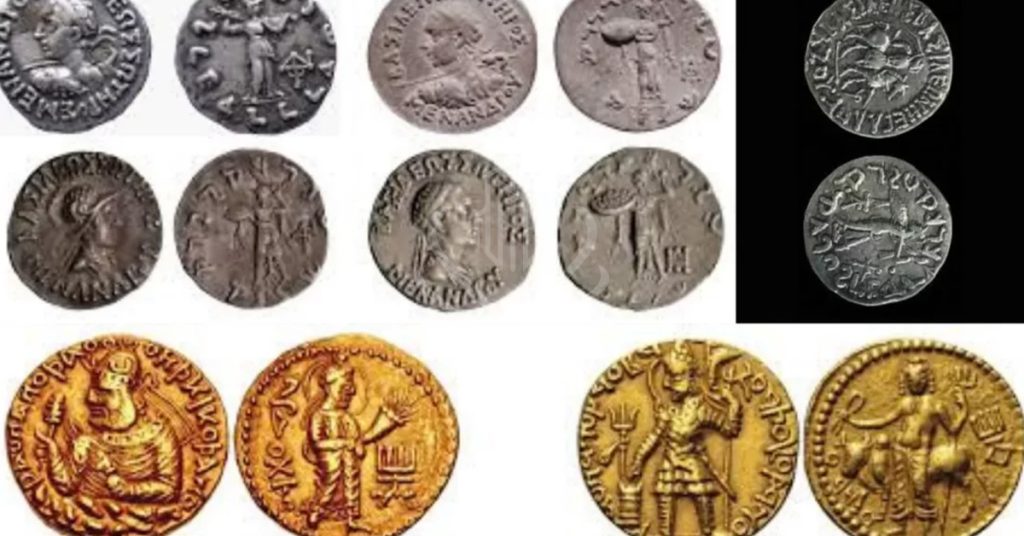
The museum’s collection of coins spans several different eras and geographical areas. Coins from the Moriya period can be recovered, along with those from the Indo-Greek, Scythian, Parthian, Sassanian, Kushans, and Kidara Kushans, spanning from the sixth century B.C. to the fifth century A.D. The coins from the White Huns and Ephthalites, which date from 40 to 510 A.D., are very remarkable.
Crocker
The Taxila Museum’s crockery collection spans from the 6th century B.C. to the 5th century A.D. It comprises a wide array of artefacts, including jars, pots, water glasses, dishes and more, offering insights into the daily life and culinary practices of ancient civilisations.
Inscriptions and Writing Materials
Numerous historic inscriptions in Aramaic, Kharoshthi, and Brahmi are on exhibit at the museum. King Ashoka and his family are mentioned in old inscriptions discovered in Sirkap. While Kharosthi scripts were utilized by the Gandhara civilization, Birchbark inscriptions in Brahmi scripts were found at Julian Monastery.
Usually, pedestals for statues or cornice pieces have these inscriptions. Inscribed texts, gravestones, and numerous ceramic fragments that were recovered from the site are also on display at the museum.
War Weapons
The museum has an extensive collection of war weapons from the 1st to 5th century A.D. The area around Taxila was a crucial battleground between alluvial plains and Central Asia, and as a result, there are many historical war artefacts here. These artefacts are arrowheads, swords, javelins, and much more. You can see these artefacts on display at the museum.
Metal Wares and Miscellaneous Items
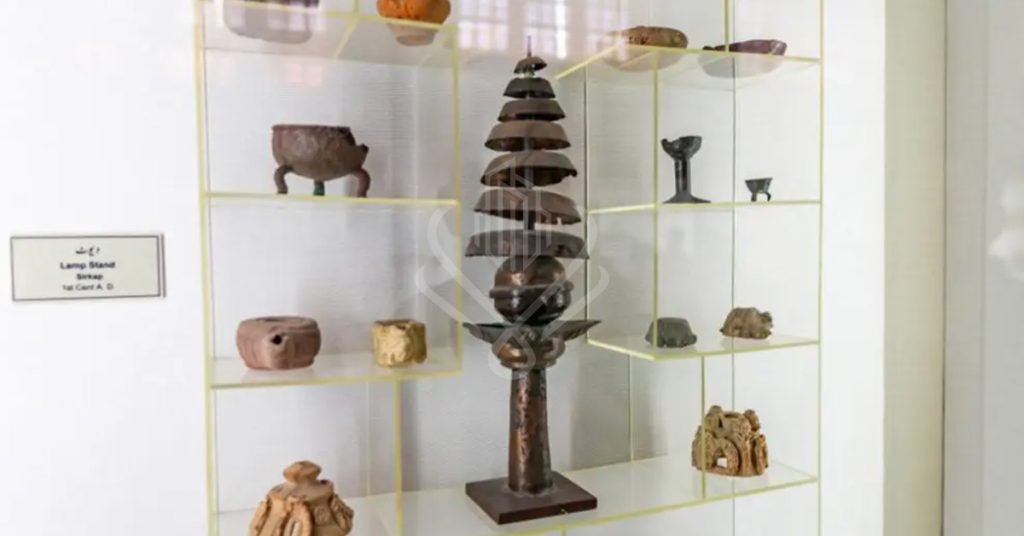
Discover a wide range of metal artefacts that highlight the historical background of their individual times as a guest. Metals including copper, bronze, and silver are used to create these objects. Spoons, cooking pots, mugs, and decorative items are among the everyday items in the collection that offer important insights into prehistoric lives and craftsmanship.
Sun God
Some of the oldest pictures of the Sungod can be seen in the Taxila Museum in Pakistan, which has an astonishing collection of ancient images of this deity. In these creative depictions, the Sungod is portrayed as a human being with a magnificent sunburst emanating from its head.
The Sungod is shown in the museum’s exhibits as a celestial deity who is sitting atop a stately lion, adorned in clothing that lasts forever, and in charge of a chariot drawn by four strong horses. Many societies, including the Greeks, Indo-Europeans, and Gandharan peoples, considered the sun deity to be a powerful symbol of divine authority.
Taxila Museum Ticket Price
These are the current prices for entry tickets at the Taxila Historical Museum:
Ticket Entry Fee
Children (Up to the age of 12 Years) Rs. 10
Adult Rs. 20
Foreigners (Tourists) Rs. 500
Contact Number
Here is the contact information of the Taxila Museum;
Address: Archaeological Museum Taxila, District Rawalpindi, Punjab.
Phone: +92-51-9315476
Frequently Asked Questions
What is the Taxila Museum?
The Taxila Museum is a prominent archaeological museum located in Taxila, Pakistan. It houses many artefacts and relics from the ancient Gandhara civilization.
Where is the Taxila Museum located?
The Taxila Museum is in Taxila, a historical town in the Punjab province of Pakistan. Its address is Taxila Museum, Shahbaz Khel Road, Taxila, Punjab, Pakistan.
What are the museum’s operating hours?
The museum is open to the public from 8:30 AM to 5:30 PM, six days a week.
Is the Taxila Museum closed on any specific holidays?
Yes, the museum is off on Fridays and certain national holidays. It’s a good idea to check in advance if you plan to visit on a holiday.
How much is the ticket price for the Taxila Museum?
As of my last update, the ticket price for the Taxila Museum is as follows:
For Pakistani nationals: 20 Rupees
For foreign tourists: 500 Rupees
Children under the age of 12 may have free entry.
Do they offer guided tours at the museum?
Yes, the museum often provides guided tours to visitors. These tours can enhance your understanding of the exhibits and the history of Taxila.
Is photography allowed inside the museum?
Visitors can take photos inside the museum for personal use but must respect the rules and privacy of others.
Are any special exhibitions or events held at the Taxila Museum?
The museum hosts special exhibitions and cultural events. Check the museum’s website or contact them for information.
Is there a parking facility available at the museum?
Yes, the Taxila Museum typically has parking facilities available for visitors. You can park your vehicle nearby for convenience.
Can I purchase souvenirs or books related to Taxila at the museum?
Yes, the museum often has a gift shop for souvenirs, books, and other items related to the Gandhara civilization and Taxila’s history.
Our Featured Article:
Read More: Islands of Pakistan: A Comprehensive Travel Guide
Don’t miss the chance to invest with Lakeshore! Secure your investment today by investing your financial investment with Lakeshore in the following available options like Lakeshore City, Lakeshore Club, and Lakeshore Farms.
For More updates, please Contact +92 335 7775253 or visit our website https://lakeshorecity.com/
Lakeshore City is the upcoming elite lifestyle at Khanpur Dam. Offering no parallel amenities for the members and owners of distinguished farmhouses.
Become Part of Luxurious Lifestyle
Contact: 0335 7775253


